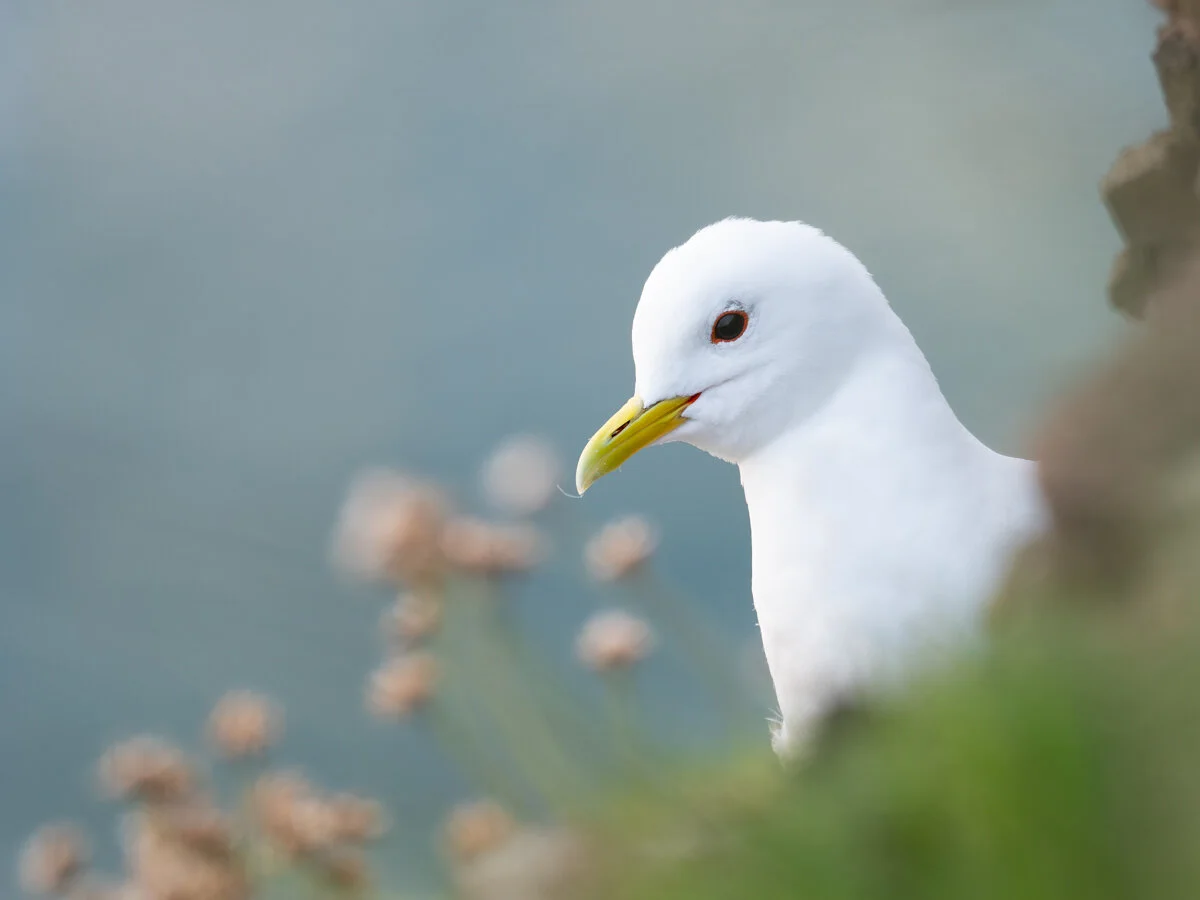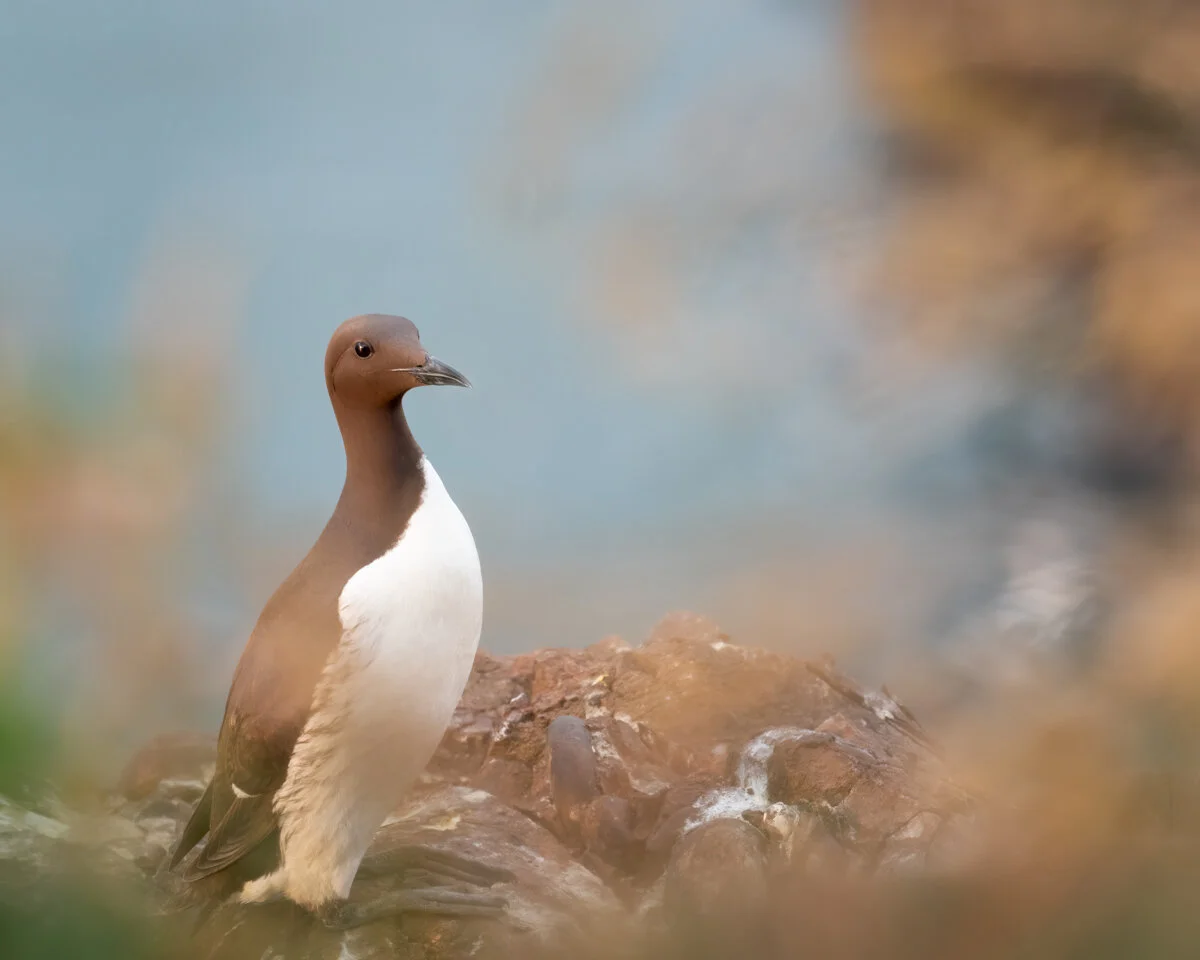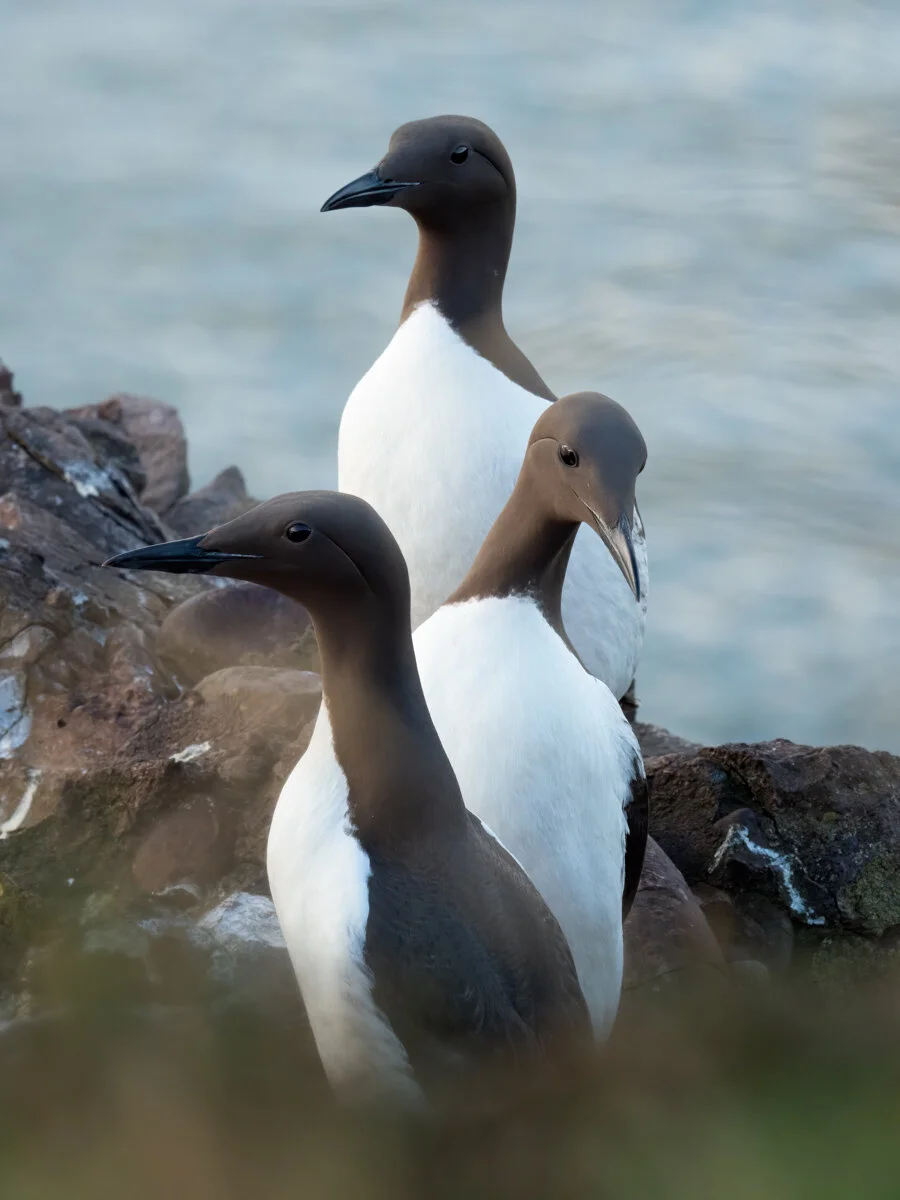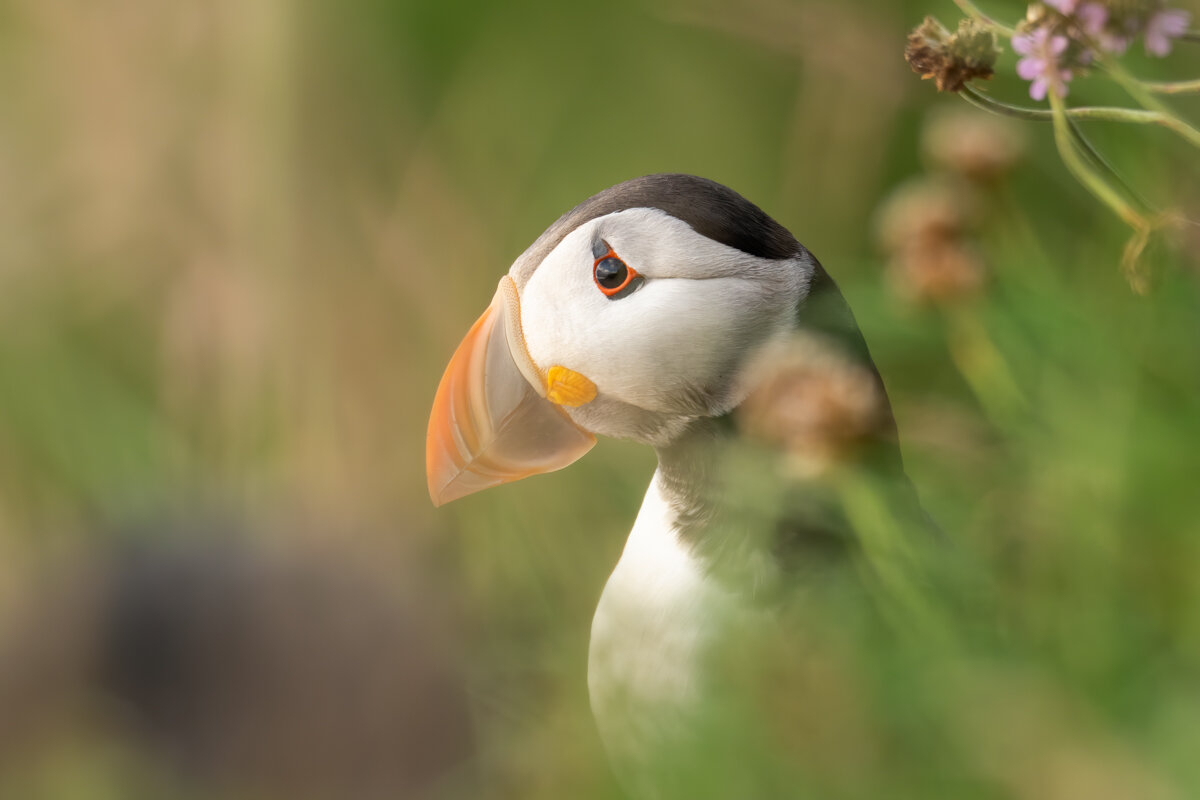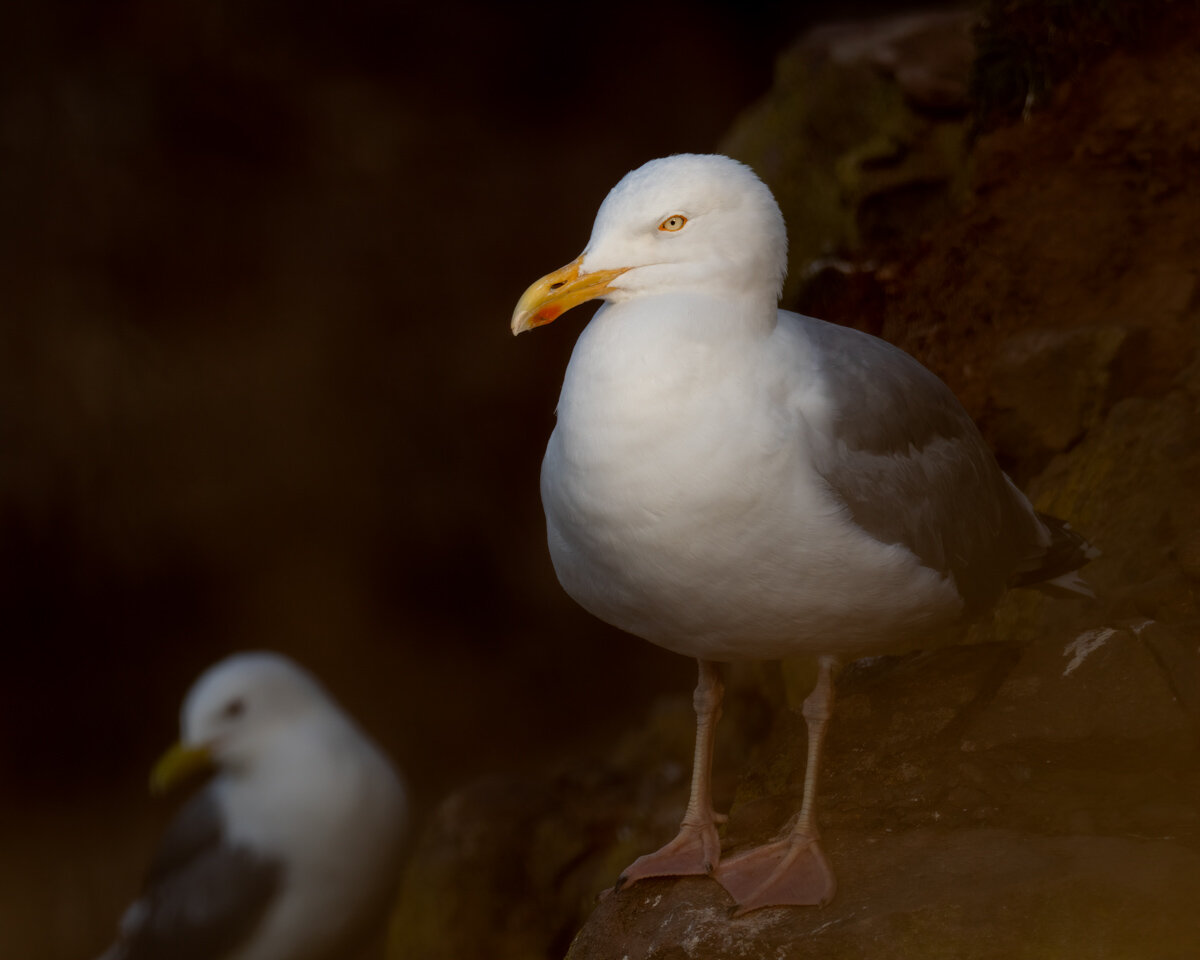Photographing Seabirds in Scotland
An Early Morning in July at Fowlsheugh RSPB Reserve
Fowlsheugh is an RSPB Reserve on the east coast of Scotland, near Stonehaven. It’s one of the largest seabird colonies on the east coast, and one of the best places in Scotland to see guillemots, razorbills, kittiwakes. (And – if you’re lucky – puffins). For this project, I was really thinking about getting the best angles for seabirds with some good light, which is why I went to Fowlsheugh reserve at 04:20 in the morning.
Research on Fowlsheugh – Habitat & Ecology
Before I go out on any project, I do a bit of research so I know what I’m looking for. I’d visited Fowlsheugh before, so I knew a bit about it and what to expect – a lot of seabirds!
In fact, it’s home to up to 123,000 seabirds. The reserve covers quite a big area – the cliffs range from 30 to 60 metres high and they extend for about 3 km. The cliffs are cut mostly in basalt and conglomerate of Old Red Sandstone, with many ledges and holes making ideal nest sites for seabirds.
Parts of the coastline are designated protected sites on account of the clifftop grasslands and internationally important colonies of breeding seabirds, particularly the guillemots, razorbills, kittiwakes and gulls. According to data from SNH, there are thought to be 36 650 kittiwakes, comprising 7.5% of the British population and 1% of the world population; 56 450 guillemots, comprising 5% of the British and EC populations, and 1.7% of the Western European populations, and 5 800 razorbills, comprising 4% of British and 3% of the EC populations.
The site is actively managed by the RSPB to protect and conserve it. A clifftop path gives spectacular views of the cliff faces and thousands of searbirds during the peak of the season (from May to early August). There are signs and paths around the site, and a kind of a hide which looks out over the breeding ledges.
Some Mildly Interesting Bird Facts
Kittiwakes
Kittiwake | Olympus EM1ii, 300mm f4, 1/125s, ISO 500
Kittiwakes, Rissa tridactyla do breed at Fowlsheugh, but across the UK their numbers are declining. Research has revealed some interesting insights into breeding performance and the impact on winter distribution. If kittiwakes fail to breed, birds will leave their summer breeding grounds early and migrate to Canada over winter. Whereas if there has been a successful breeding season, the birds will stay closer to their breeding grounds for their first winter, which is thought to be down to the energy taken up by raising chicks.
Razorbills
Razorbills, Alca torda are medium-sized auks that spend the majority of their lives at sea, only coming to shore to breed. They nest on ledges and can also nest among rocks at the bottom of cliffs.
Razorbill | Olympus EM1ii, 300mm f4, 1/125s, ISO 320
The closest relative to the razorbills was the great auk (Pinguinus impennis), which became extinct in the UK in 1840 after being hunted for its meat, feathers, fat and oil, and then by specimen collectors. While great auks are not closely related to penguins, they so closely resembled them in terms of their size and characteristics (they were also flightless) that the sailors who discovered these flightless birds of the southern hemisphere named them penguins after the great auk.
But, getting back to razorbill factoids… They have an average lifespan of 13 years old. However, one bird ringed on Bardsey Island in 1968 was seen again in 2009 – making it an incredible 41 years old.
Razorbill | Olympus EM1ii, 300mm f4, 1/125s, ISO 250
Guillemots
Guillemots | Olympus EM1ii, 300mm, 1.4x, f5.6, 1/160s, ISO 400
Guillemots, Uria aalge are also medium-sized auks that spend their life at sea and come back to shore to breed. They nest at numerous locations around the UK, though they tend to nest further up the cliffs than razorbills. They have a tiny nesting territory, possibly the smallest of any bird, extending just a beak length round its nest (about 5cm). The guillemot egg is distinctly cone-shaped which is thought to be so it can roll in circles rather than off the narrow cliff edge on which it’s laid. The eggs are also covered in a hydrophobic metastructure, meaning that it is self-cleaning.
Guillemot | Olympus EM1ii, 300mm, f7.1, 1/80s, ISO 1000
Guillemot | Olympus EM1ii, 300mm, 1.4x, f5.6, 1/160s, ISO 200
Obviously, as well as being interesting, these birds are also great to photograph – which is why I wanted to head to the reserve and see what I could do.
Guillemot | Olympus EM1ii, 300mm, f4, 1/160s, ISO 250
Guillemots | Olympus EM1ii, 300mm, f13, 1/125s, ISO 1000
Guillemot | Olympus EM1ii, 300mm, f5.6, 1/125s, ISO 500
Photography Conditions
I went to Fowlsheugh in early July. Sunrise was at 4:20 am, which meant an extraordinarily early start (again!). You have to be kind of crazy to love photography in Scotland in summer! Sunrise is to the northeast, but I missed it – arriving just after 4:20 am. It was quite overcast and the sun hadn’t yet broken through the clouds.
I made my way along the path which runs along the top of the cliffs, which allowed me to photograph down towards the rocky ledges. I could also take photographs towards the cliffs opposite me. Mostly the images would be backlit, but there are many outcrops along the cliffs which enable you to go out and look back, and be able to take front-lit images.
Photographing Seabird Colonies in Scotland
On the day I visited Fowlsheugh, I saw one puffin, which I felt really lucky about as there only a couple recorded there. There are cormorants and shags – but not on the top of the cliff. From the path running along the top of the cliffs, I was mainly focused on the auks and the gulls.
Puffin | Olympus EM1ii, 300mm, 1.4x, f5.6, 1/200s, ISO 500
My goal was to capture individual birds on their own or in small groups, displaying interesting behaviours.
In total, I spent 4 hours at the reserve. The first 3 hours I had it for myself – I guess that’s the main benefit of showing up so early!
Herring Gull | Olympus EM1ii, 300mm, 1.4x, f5.6, 1/500s, ISO 200
Final Review of the Images
On my Patreon site, I take my members through the whole lot – the unedited and un-culled images from the day – to explain my process, my thinking when in the field relating to camera settings and composition, and a bit about exactly what I was looking for to get the images I wanted.
I also explain some images that I missed and what I could have done differently, for next time! So if you want a bit of a deeper dive on the behind the scenes of this project of photographing seabird colonies in Scotland as well as a lot more content to improve your photography, you might want to go look at my Patreon and check it out.

